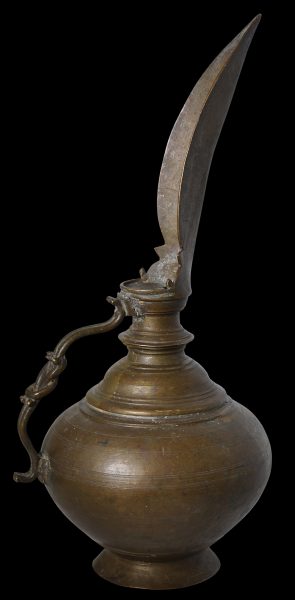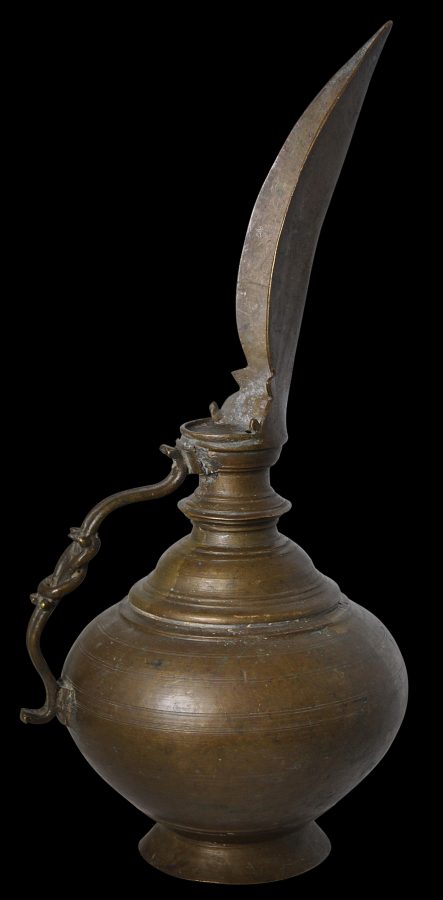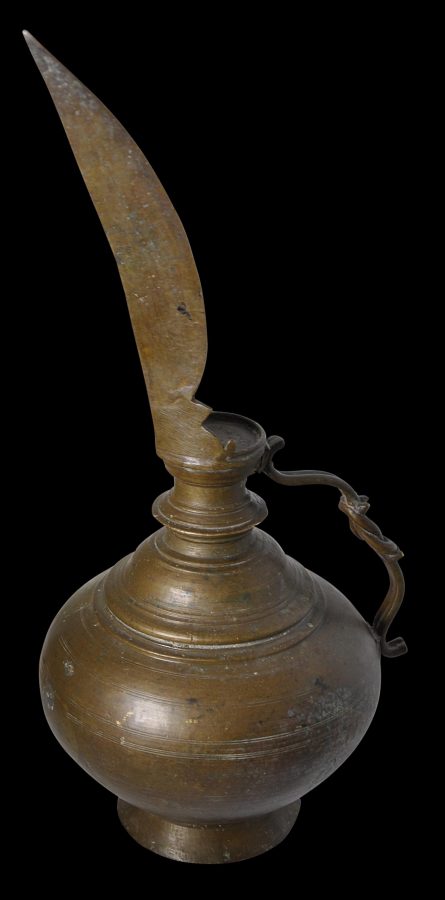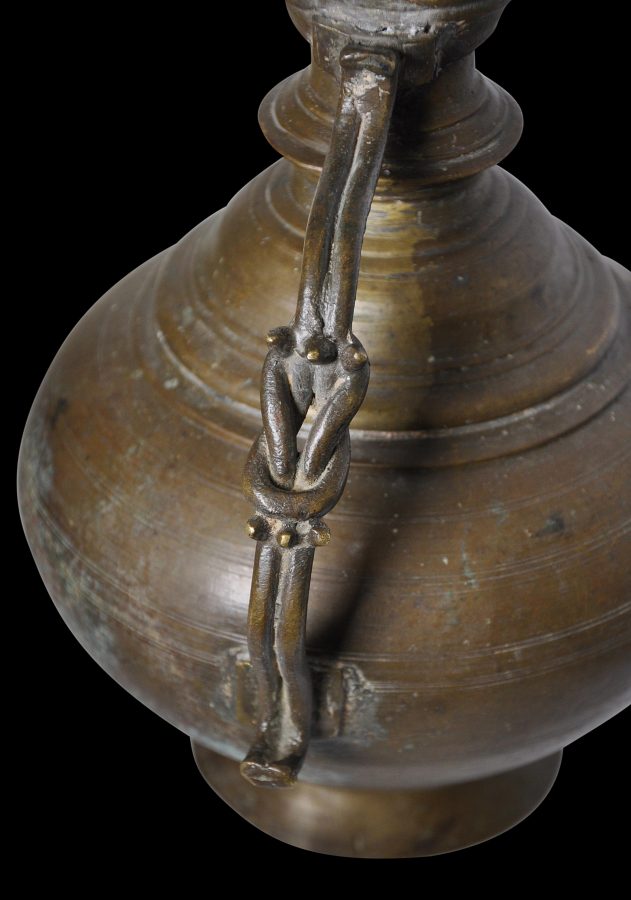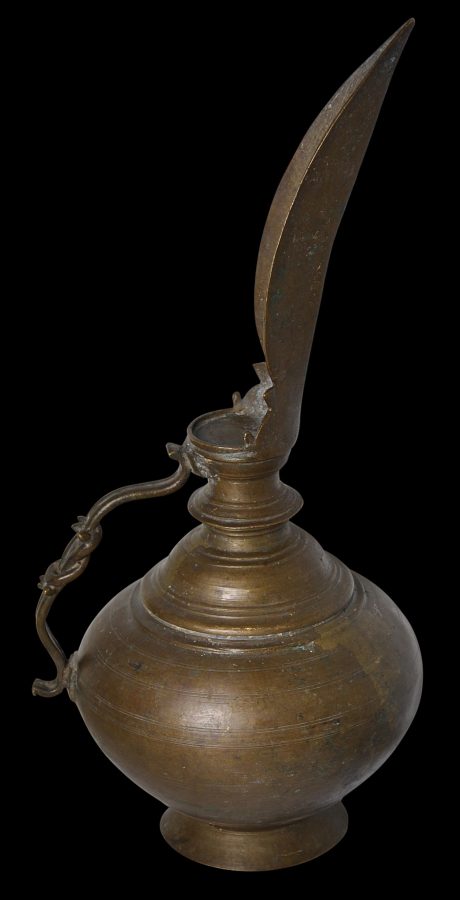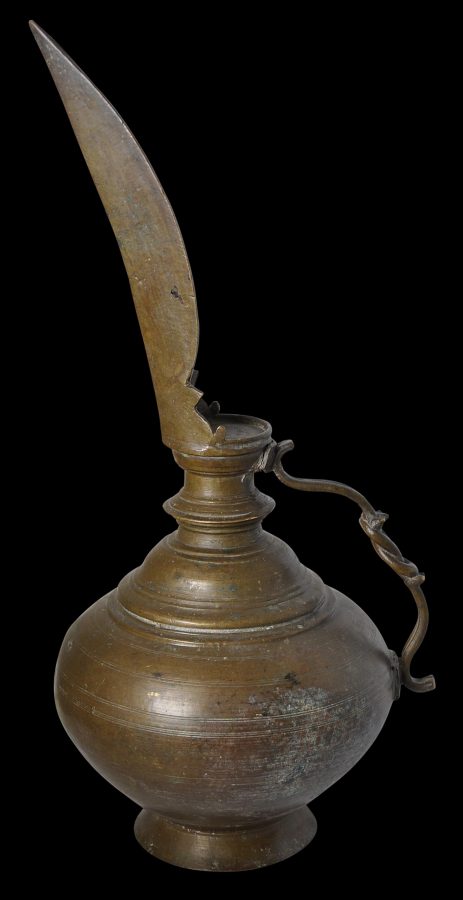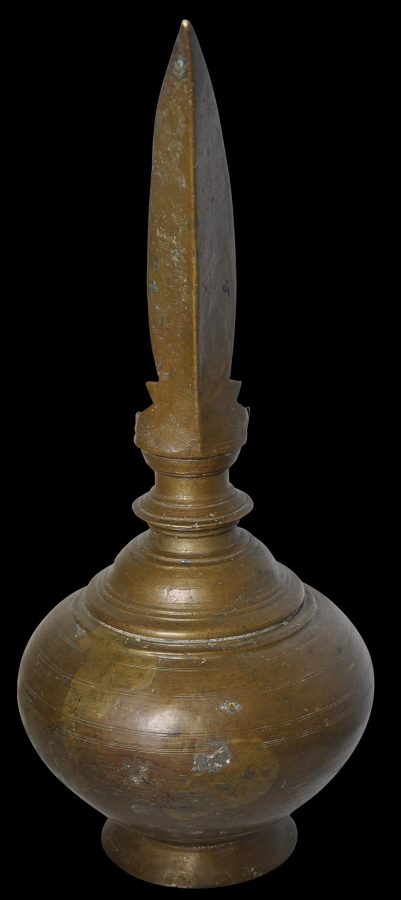This elegant ewer has a particularly pleasing shape given its unusually long spout which rises like a beak from a bird. The ewer sits on a low, flared foot; has a slightly flattened, spherical body; and a long, elongated, tapering spout. The handle features an unusual rope-twist knot.
Among Hindus, this knot is known as the Brahma mudi or the ‘knot of Brahma’, for it is without a beginning or an end and is symbolic of the unending cycle of creation for which Brahma is responsible.
The top of the body has been cast with various concentric tiers.
The handle is has been soldered to the base rather than riveted and the top join is now slightly weak. But other than this, the ewer is in fine condition and has a golden-brown patina, along with some patches of verdigris here and there.
Only a few similar ewers with a rope-twist handle have been published. This example is larger than most. It is also noticeably heavy, weighing almost two kilograms.
Such ewers were used in temples in Sri Lanka and South India for filling the wells of small lamps with oil, the elongated, pointed spout being ideal for this task.
A similar ewer was offered at Sotheby’s London, ‘Arts of the Islamic World’, October 14, 1999, lot no.: 175.
References
Coomaraswamy, A.K., Mediaeval Sinhalese Art, Pantheon Books, 1956 reprint of the 1908 edition.


